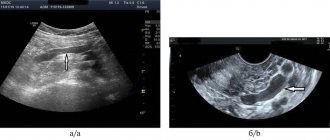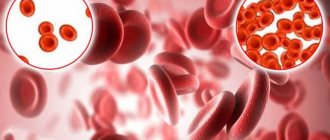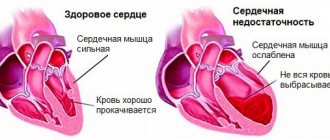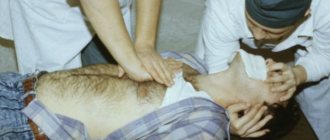Anonymously
Around the clock
Attention! The material contains information about substances, the use of which can cause serious harm to your health!
With the development of the synthetic drug market, the number of cases of overdose from psychoactive drugs is rapidly increasing. Dangerous compounds are often made at home, and no one calculates the exact level of active substances and impurities in them.
- Drug coma: what is it?
- Causes of drug coma
- Signs of a drug-induced coma
- Consequences of coma from overdose
- Death after coma
- How long does a drug coma last?
- Types of drug coma
- Heroin coma
- Toxic coma
- Opiate coma
- Coma after an overdose of pills
- Help with a drug-induced coma: advice from a narcologist
- How to wake up from a coma at home
- Recovery from a drug-induced coma in a hospital
- Urgent Care
- First aid for drug poisoning
- Drug therapy for drug poisoning
- How to relieve drug poisoning at home
- Droppers for drug intoxication
- Drug poisoning pills
- Treatment of drug poisoning in the hospital "Zdravnitsa"
Base
- Narcologist on call 24/7, within 40 minutes
- Consultation with a narcologist
- Dropper 500 ml
- Purpose of therapy
- Tablet course for three days
- Monitoring the patient's condition after the procedure
4,700 RUB
Call a doctor
Standard
- Narcologist on call 24/7, within 40 minutes
- Medical examination
- Consultation with a narcologist
- Dropper 1000 ml
- Purpose of therapy
- Tablet course for three days
- Monitoring the patient's condition after the procedure
5900 RUB
Call a doctor
Intensive
- Narcologist on call 24/7, within 40 minutes
- Medical examination
- Consultation with a narcologist
- Dropper 1500 ml
- Purpose of therapy
- Tablet course for three days
- Monitoring the patient's condition after the procedure
8900 RUB
Call a doctor
Standard
- 6-bed ward
3,000 RUB
Comfort
- 2-bed ward
RUB 5,500
VIP
- 1-bed ward
8,000 RUB
We will select an individual treatment plan
Free consultation 8-800-200-27-23
At the same time, a very small dose is enough for intoxication with some substances. Therefore, increasingly, young people and adolescents, often unknowingly or in pursuit of stronger sensations, find themselves on the verge of life and death, falling into a narcotic coma from an overdose of a psychoactive drug.
Drug coma: what is it?
Drug coma is a condition in which depression of the nervous system occurs, occurring after the use of psychoactive drugs. Often this condition provokes respiratory depression, resulting in a blockage of the central nervous system.
From the outside it seems that the person has fallen asleep. But at the same time:
- it does not respond to light, sound and external stimuli;
- cannot control his own physiological urges (there is a high risk of death from vomit entering the respiratory tract, so it is important to immediately lay the victim on his side and pull out his tongue);
- does not react to others;
- his muscles are relaxed, cramps may appear;
- pupils do not react to light.
In a coma state, the victim retains breathing, pulse and body temperature, so people often confuse it with sleep and waste precious time without seeking medical help.
HOW TO MOTIVATE A DEPENDENT FOR TREATMENT
Causes of drug coma
Drug coma can occur for the following reasons:
- Due to the large number of dangerous impurities contained in low-quality drugs, acute intoxication occurs, which leads to coma. Most often, the buyer does not even know what elements are contained in the purchased powder. This is especially true for synthetic substances, which are often sold in the form of salt.
- When producing synthetic drugs in clandestine laboratories, few people calculate the exact concentration of active substances in the drug. Moreover, for an overdose, only a microscopic dose of salt or spice is enough. Therefore, anyone who uses artificial drugs risks dying from an overdose every time, even without exceeding the required dose.
- A person addicted to any psychoactive drug (including herbal drugs and alcohol) eventually ceases to fully feel euphoria, the feelings gradually weaken, therefore, in order to again feel pleasant sensations, the person is forced to constantly increase the dosage. One day, such a pursuit of pleasure ends in a drug-induced coma or even death.
- In pursuit of new sensations, drug addicts begin to mix different psychoactive substances with each other, resulting in an overdose or acute intoxication.
REHABILITATION
Signs of a drug-induced coma
In case of an overdose of psychoactive drugs or the use of low-quality drugs containing a large number of dangerous chemical compounds, a person may experience acute intoxication of the body.
For this reason, a change in metabolism occurs in brain cells, the algorithm for transmitting impulses through the nervous system is disrupted, as a result of which a person loses consciousness and develops a drug-induced coma. Most often, addicts who use the following drugs are admitted to intensive care with this diagnosis:
- Sleeping pills,
- Barbiturates,
- Opioid substances (heroin, methadone, morphine),
- Synthetic drugs (codeine, mephedrone, spice, etc.)
Consequences of coma from overdose
Coma is an extremely serious test for the body. Often the victim does not have time to provide full resuscitation care or is not even transported to the hospital. And doctors cannot always cope with severe intoxication, so the mortality rate when falling into a drug-induced coma is extremely high.
But even if medical care was provided on time and the person was able to return to a normal state, the consequences of intoxication will affect the functioning of all organs and systems of the body.
DETOXIFICATION FOR DRUG ADDICTION
Death after coma
It is extremely important that resuscitation measures and qualified medical care are provided at the first stage of the onset of coma, otherwise irreversible changes will begin in the body, namely:
- complete muscle relaxation occurs,
- pupils dilate,
- blood pressure drops to critical,
- the skin becomes bluish.
If necessary medical care is not provided, death from coma occurs as a result of the following reasons:
- the tongue sinks into the throat (choking may occur);
- the breathing process is disrupted, the center of the brain responsible for breathing is depressed, resulting in death from asphyxia;
- as a result of oxygen deficiency, the vasomotor center is blocked, arrhythmia, tachycardia, and cardiac arrest develop;
- pulmonary edema leading to asphyxia.
Symptoms
The primary signs of alcoholic cardiomyopathy are considered to be disturbances in heart rhythm and sleep, and the appearance of headaches. In the future, even with slight exertion, shortness of breath occurs. Congestion often appears in the form of edema. Most often, patients do not see the relationship between symptoms and their addiction, or even completely deny its existence. Their characteristic external features are:
- • constant redness of the face;
- • hand tremor;
- • agitation and talkativeness not caused by objective circumstances;
- • a sharp change in body weight – both upward and downward;
- • a very characteristic blue-purple nose, on which dilated blood vessels are clearly visible;
- • the eyes in general are red, and the sclera in particular is yellow.
Characteristic symptoms of this disease are insomnia, heart pain, lack of air, rapid heartbeat, cold extremities, feeling hot, and increased sweating. A medical examination reveals arrhythmia, tachycardia, increased blood pressure, and disruptions in the functioning of the liver and kidneys.
How long does a drug coma last?
The coma state is conventionally divided into 4 stages:
- Falling asleep
- Superficial stage
- Deep coma
- Death or recovery from a coma.
If a person falls into a deep coma while in a medical facility, a person can remain there for quite a long time. However, such an experience is extremely painful for the body and carries many negative consequences for the body. Therefore, it is very important to prevent this stage from occurring. To do this, it is necessary to provide the victim with medical assistance as soon as possible.
REMOVAL AT HOME
Diagnostics
To detect alcoholic cardiomyopathy, many diagnostic methods are used. Here are some of them:
- • Blood chemistry.
- • Analysis of urine.
- • Electrocardiography (ECG).
- • Echocardiography (EchoCG).
- • Scintigraphy.
- • Angiography of cardiac vessels.
- • Myocardial catheterization followed by endocardial biopsy.
- • X-ray examination.
In addition to instrumental examinations, complaints and medical history are studied, and obvious symptoms are recorded.
Types of drug coma
Depending on the drug used, there are several types of narcotic coma. To administer the necessary antidote, predict the situation and carry out relevant resuscitation measures, it is important for doctors to know which drug resulted in intoxication.
Heroin coma
Heroin coma most often occurs from an overdose of this drug. Intoxication with this drug leads to the rapid development of severe complications. To remove heroin particles from the body, effective antidotes are used - Naltrexone or Naloxone. If you suspect that a loved one is using heroin, it is better to buy an ampoule of the medicine at the pharmacy in advance, so that if necessary, you can immediately administer the drug, without causing more serious consequences.
HEROIN ADDICTION TREATMENT
Toxic coma
Low-quality drugs prepared in an artisanal way are a common cause of toxic coma. This is especially true for synthetic substances, which may contain ammonia, detergents, manganese and other life-threatening substances.
Opiate coma
When a coma occurs as a result of an overdose of opiate drugs, hardware detoxification with the help of Naloxone is most often performed. A large amount of this drug, which is an opiate antidote, is injected into the body to bind narcotic toxins and remove them from the body.
Coma after an overdose of pills
Drug overdose can occur as a result of:
- erroneously taking a potent drug in large quantities,
- intentionally taking drugs in greatly increased dosages to obtain a narcotic effect.
As a result of an overdose of tablets, there is a high probability of a drug-induced coma. Most often, intoxication occurs due to exceeding the dosage of the following drugs:
- sleeping pills,
- sedatives, painkillers,
- nootropic drugs,
- cardiac drugs.
Find out treatment recommendations without leaving home for free
To select a treatment plan, you just need to leave a request, we will contact you to select the time and specialist you need
Submit your application
Risk factors
Most heart attacks result from atherosclerosis. The risk factors for heart attack and atherosclerosis are essentially the same:
- abnormally high levels of cholesterol in the blood (hypercholesterolemia);
- abnormally low levels of HDL (high-density lipoprotein), commonly called “good cholesterol”;
- high blood pressure (hypertension);
- diabetes;
- family history of coronary heart disease at an early age;
- smoking cigarettes, hookahs, vapes;
- obesity;
- lack of physical activity (too little exercise).
During middle age, the risk of heart attack is higher for men than for women. However, a woman's risk increases when she goes through menopause. This may be the result of a menopause-associated decrease in estrogen, a female sex hormone that may provide some protection against atherosclerosis.
Although most heart attacks are caused by atherosclerosis, there are rarer cases where heart attacks occur as a result of other diseases. These include congenital anomalies of the coronary arteries, hypercoagulability (an abnormally increased tendency to form blood clots), collagen vascular diseases such as rheumatoid arthritis or systemic lupus erythematosus (SLE or lupus), cocaine abuse, coronary artery spasm or embolus (small moving blood clot) , which enters the coronary artery and gets stuck there.
Treatment prices:
| Service | Price, rub) |
| Types of therapies | |
| Standard detoxification therapy | 3 500 ₽ |
| Double Detox Therapy | 6 000 ₽ |
| Enhanced Detoxification Therapy | 7 500 ₽ |
| Maximum detoxification therapy | 9 500 ₽ |
| Quick sobering up at home | 7 500 ₽ |
| Hospital at home 1 day | 22 000 ₽ |
| Advanced hospitalization | 15 000 ₽ |
| Treatment in hospital | |
| Accommodation | |
| Economy chamber (6 beds) | 2 000 ₽ |
| Standard room (4 beds) | 3 000 ₽ |
| Increased comfort (2 seater) | 5 500 ₽ |
| VIP chamber (1 person) | 12 500 ₽ |
| Individual post 24/7 | 5 000 ₽ |
| Medical and social rehabilitation 21 days | 140 000 ₽ |
| Service | Price, rub) |
| Initial consultation with a narcologist | for free |
| Consultation with a psychologist | 3 000 ₽ |
| Psychiatrist consultation | 5 000 ₽ |
| Coding at home Torpedo | 7 500 ₽ |
| Express output and encoding (doublet) | 13 500 ₽ |
| Coding using the Dovzhenko method | 12 000 ₽ |
| Hypnosis classic session | 13 000 ₽ |
| Ericksonian hypnosis session (NLP) | 8 000 ₽ |
| Coding method Torpedo | 5 500 ₽ |
| Double block | 8 000 ₽ |
| Esperal injection for 1 year | 9 900 ₽ |
| Tetlong for 3 months | 10 500 ₽ |
| Esperal gel for 1 year | 15 000 ₽ |
| Selincro course of therapy | 12 500 ₽ |
| Implantation of Disulfiram for 1 year | 18 000 ₽ |
| Vivitrol injection for 1 month | 26 000 ₽ |
| Naltrexone stitching for 3 months | 35 000 ₽ |
| Neuroimplantation Prodetoxon for 6 months | 47 500 ₽ |
| Narcopsychotherapy session | 50 000 ₽ |
| Neutralization of encoding | specify |
| Psychodiagnostics / pathological diagnostics | 7 500 ₽ |
| Psychotherapy session | 5 000 ₽ |
| Family psychotherapy | 6 000 ₽ |
| Outpatient rehabilitation in Moscow | 33 000 ₽ |
Expand
ANONYMOUS TREATMENT OF DRUG ADDICTION
How to get to us
A team of doctors will quickly arrive at your address, carry out the first resuscitation measures and urgently deliver the victim to the intensive care unit of a drug treatment clinic.
Article verified by an expert
Terekhova Anna Vladimirovna
psychologist-consultant on socio-psychological work with addicted clients and their families. More than 10 years of experience.
Similar articles:
Children's drug addiction
How is alcoholism treated at home?
Screw: what is it, the effect and consequences of use
The drug salt: signs of use and treatment
How long does heroin last in urine?
One comment on ““Drug coma””
- Alexandra:
June 29, 2021 at 10:57 pm
Drug coma is a condition characterized by depression of the central nervous system caused by drug use. Coma is often a consequence of taking opiates, barbiturates, salts and spice. Due to the powerful effects such psychoactive substances have on the body, even in microscopic doses, an overdose is more than likely.
Answer
Causes
The primary cause of the disease in question is systematic intoxication of the body with alcohol-containing drinks. Secondary reasons include:
- • weakened immune system;
- • damage by infections or viral bacteria;
- • lack of the required amount of vitamins and proteins in the diet;
- • Congenital heart defect;
- • hereditary predisposition to cardiomyopathy;
- • disrupted work and rest schedule;
- • constant stressful situations.
The risk of developing alcoholic cardiomyopathy is directly proportional to the duration of use and the volume of ethanol consumed. Due to individual sensitivity to this poison, different people develop this disease under the influence of different doses. It is believed that for the development of a fatal form of cardiomyopathy, it is necessary to take from 60 to 150 g of pure ethanol per day daily for 3-10 years.
Complications of myocardial infarction
Each coronary artery sends blood to a different part of the heart muscle. The extent of muscle damage depends on the size of the area supplied by the blocked artery and the amount of time between the attack and treatment.
The heart muscle begins to repair itself soon after a heart attack. This takes about 8 weeks. As with skin wounds, a scar forms on the damaged area. But new scar tissue moves differently than healthy tissue. Thus, the heart cannot pump as much blood after a heart attack and heart failure is a complication. The extent to which this ability to pump blood is impaired depends on the size and location of the scar.
In addition, some coronary arteries supply blood to areas of the heart that regulate the heartbeat, so a heart attack sometimes causes potentially fatal abnormal heartbeats called cardiac arrhythmiasSource: Complications of Myocardial Infarction in the Elderly. Khalmukhamedov B.T. Eurasian Journal of Cardiology, 2021. p. 29-30.







